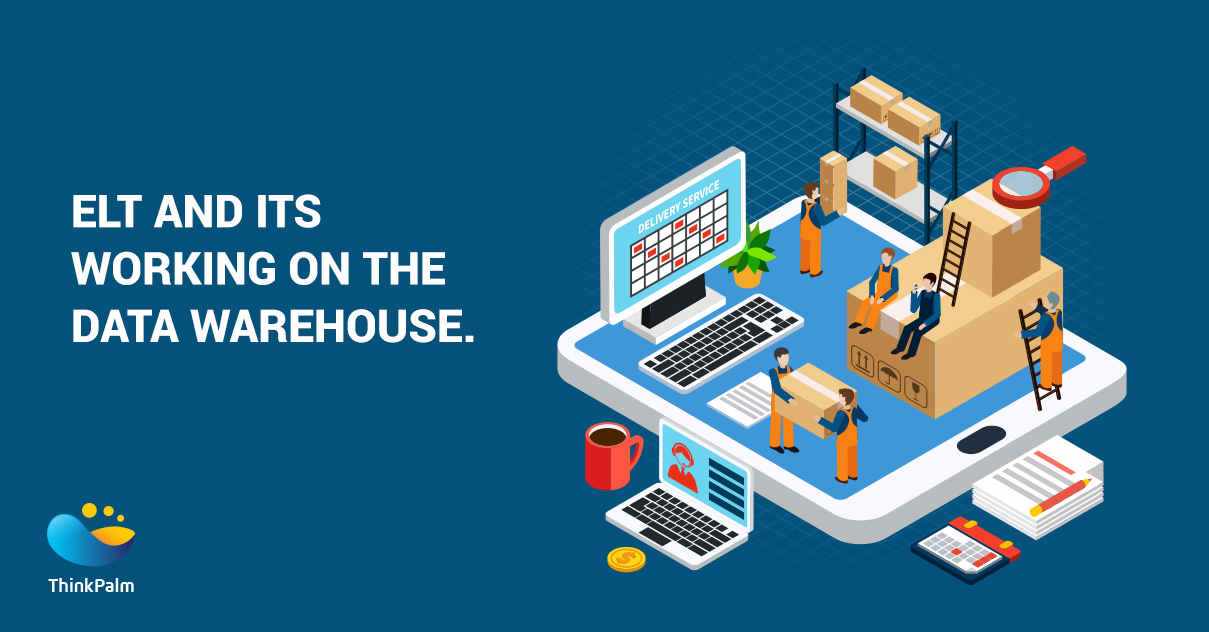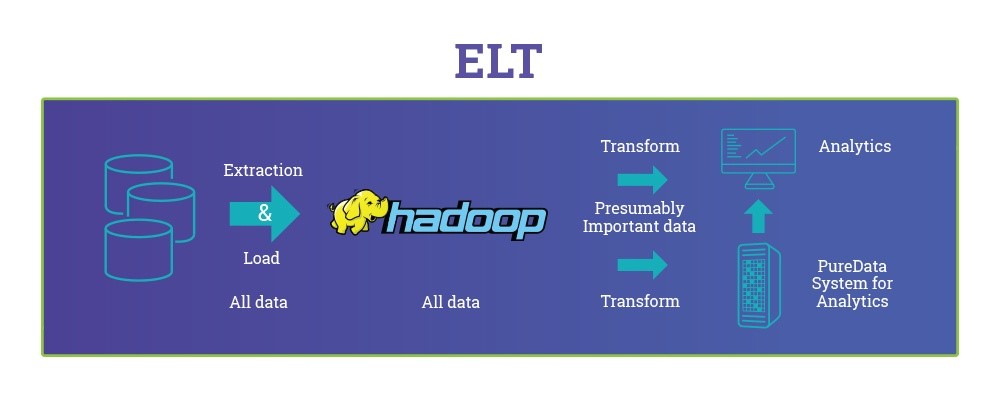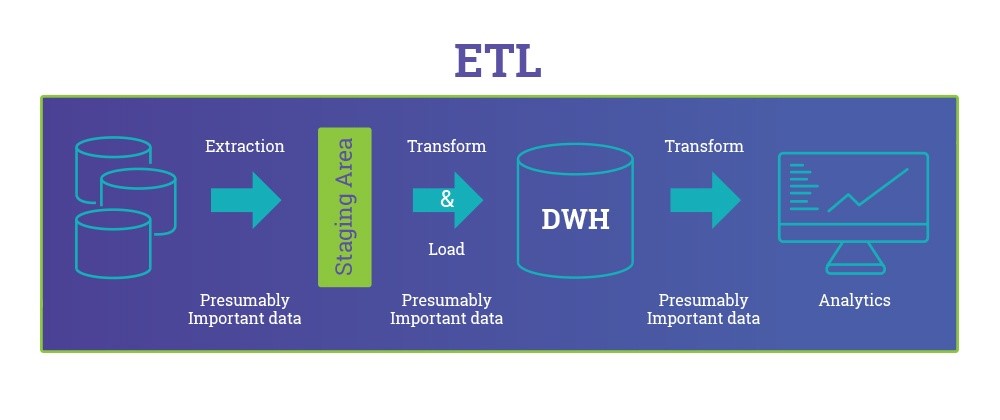
In the modern business world, efficient data analysis is critical to business growth. Loading data to a traditional data warehouse is a time-consuming process. The ELT (Extract, loading and transform) used in a modern data warehouse will help to manage and analyze big data so that businesses can focus on digging the data for future decisions.
Extract/Load/Transform (ELT) is the process of extracting data from single or multiple sources. Extracted data will load into a data warehouse. The main advantage of ELT is it will not transform the data before it loading to the warehouse. The target system in ELT will transform the loaded data. This approach requires fewer remote resources than other techniques because it needs only raw or uninterrupted data.
ELT is a replacement of traditional ETL technology. In ELT transformation component is placed in the target database for better performance. This technique is very helpful to process large amounts of data for BI and analytics. Because of the processing capability already built into storage infrastructure. ELT boosts efficiency by reducing the time data spend in transit.
How Does ELT Work
In ELT data is extracted from single or multiple locations and load it into a single location for transforming the data for Business intelligence and Bigdata analytics. ELT process consists of three steps.
- Extract: This process is common in both ELT and ETL, in this stage raw data from different sources. Extraction involves data validation to confirm whether the pulled data is correct or satisfying the rules or conditions defined. If the validation fails, data may reject entirely or partially. The rejection report will send to the source system for further analysis or rectification.
- Load: In this step, the raw data is sent to an interim processing server for transformation. ELT sends directly to the target storage location. This reduces the time between extraction and delivery.
- Transform: In this step, data is converted from its source format to the required format for analysis. This is performed on the basis of rules that define how the data should be converted for analysis in the target system. This step takes many different forms like converting coded data into an understandable format using lookup tables and code.
Some examples of data transformation are
- Joining data from different tables and database
- Change the data type of data
- Applying numerical and aggregate functions on data
- Change codes with values
ELT is an advanced version of Extract Transform Load (ETL), is a process in which transformation is done on the intermediate server before loading data into the target server. But ELT allows row data to be loaded directly into the target server and transform from there.
In the ELT approach, a data extraction tool is used to obtain data from a source or multiple sources, and the extracted data is stored in a staging server or database. Data integrity check and business rules are applied to this staging area and then it loads to the data warehouse. All the data transformations are done in the data warehouse after the data is loaded.
ELT vs. ETL


In ETL data is transformed before loading into a data warehouse so, raw data is not available in the data warehouse but in ELT data is loaded into the warehouse then transformation applied on the stored data.
Staging areas are used for ELT and ETL, in the ETL staging area is incorporated in the ETL tool being used. In ELT staging area is in the database used in the warehouse.
ELT is mainly used for processing large data sets required for BI and big data. ELT is more suitable for processing non-relational and unstructured data. ETL is mainly used with relational data.
In ETL more upfront planning should be conducted to ensure that all relevant data is being integrated. IN ELT transformation is not depend on extraction so ELT is more flexible than ETL.
In ETL a single tool is enough to perform the three steps so the administration is easy as compared with ELT. In ELT multiple tools used for administration.
In ETL only relevant data processing can reduce the designing and development time. ELT follows a more flexible approach, development time may expand depending upon requirements and approach.
Data integration professionals are required for writing transformation code in ETL. In ELT transformations are written by programmers and can easily be maintained like other programs.
In ETL for performing the transformation, the ETL tool requires specific hardware with its own engine. In ELT there is no requirement for additional hardware.
Benefits of ELT
ELT reduces the load time relative to the ETL model this reduces the time that data spends in transit and is usually more cost-effective. ELT is efficiently utilizing modern data storage systems.
In ELT we can move the entire data set as it exists in the source system to the target. In the ETL approach, the raw data is transformed before it is loaded to the data warehouse. This flexibility can improve data analysis.
Use of ELT
ELT is mainly used in the following scenarios,
- Data is structured but the source and target database are the same types
- Data is unstructured and massive, such as processing and correlating data from log files and sensors.
- Data is relatively simple, but there are large amounts of it.
- If there is a plan to use machine learning tools to process the data.
ELT tools
ELT is implemented using separate tools for extracting, loading and transforming data. While searching for a tool, we have to ensure that it will load data from multiple sources. Some of the main ELT tool providers are as follows,
- Talend
- IBM
- Informatica
- Oracle
- Microsoft
For a free consultation on IoT, Enterprise or Telecom Service, contact us at sales@thinkpalm.com
Author Bio:

Anoop Chandran: Anoop works as a Senior Software Engineer with ETG department. His hobbies include listening to Music and Reading.



